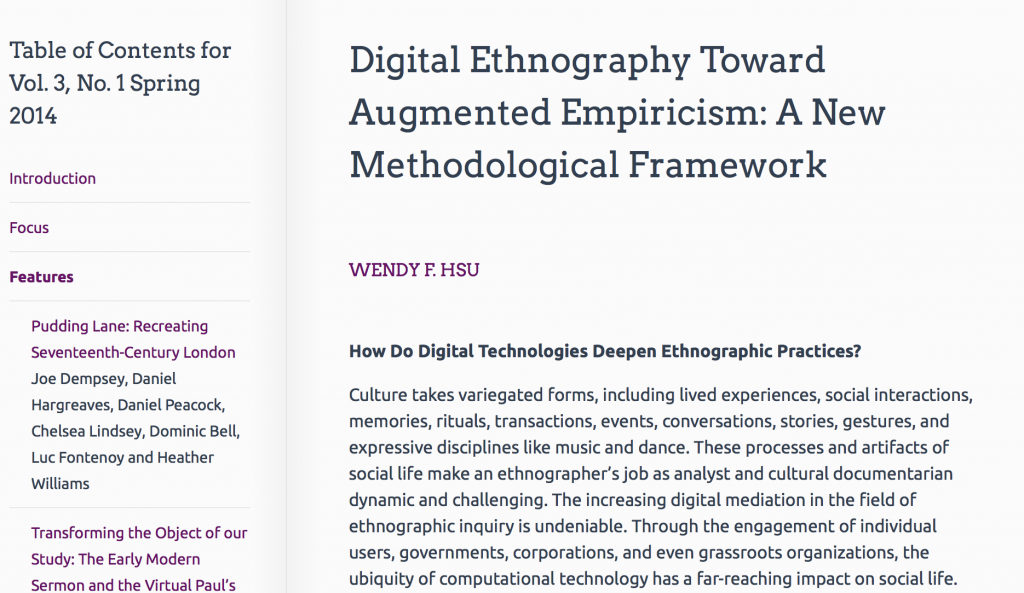I’m thrilled to announce that my article entitled “Digital Ethnography Toward Augmented Empiricism: A Methodological Framework” is finally out in the latest issue of Journal of Digital Humanities. This paper is the culmination of a series of making, coding, experimenting, writing, and reframing efforts to redefine the role of ethnography in the age of digital information. I open with the following provocation:
Culture takes variegated forms, including lived experiences, social interactions, memories, rituals, transactions, events, conversations, stories, gestures, and expressive disciplines like music and dance. These processes and artifacts of social life make an ethnographer’s job as analyst and cultural documentarian dynamic and challenging. The increasing digital mediation in the field of ethnographic inquiry is undeniable. Through the engagement of individual users, governments, corporations, and even grassroots organizations, the ubiquity of computational technology has a far-reaching impact on social life. These technologies mediate culture by documenting, sharing, sensing, tagging, locating, trading, synchronizing, filtering, automating, remixing, and mining the everyday experiences of our research associates. Rather than walking away from the digital, we ethnographers should give serious considerations to software as infrastructure and materiality at the sites of our research. We should also be mindful of our own digital research practices as we utilize digital technology to organize, manage, and publish our field findings.
A preview of what my paper delves into:
In this article, I examine how working with a variety of digital tools, including webscraping, mapping, and sound visualization, could widen the scope of ethnographic work and deepen our practice. I stay within the domain of data gathering in part one. In part two, I talk about the process of interpreting field data and the value of geospatial visualizations. The last part explores digital methods that magnify our perception of physical senses like sound, sight, and space. Throughout these discussions, I will also comment on the methodological, and where relevant, the social implications of these approaches.
Finally, I end with the call:
Digital ethnography as I have methodologically reframed is not fundamentally different from traditional ethnography. We have learned much from doing things across the silos of the society and the academy because doing in the form of participation, as opposed to thinking or theorizing alone, is humbling and it pushes the boundaries of our horizons. This multiplicity—in senses, modalities, information sources, languages, categories, data types, and frames of analysis—speaks to a juncture at which technology underlies the change in form and content in our social life. In addition to speculating and theorizing this change, we should heed the praxis axiom of ethnography to open up the black box of ethnographic methodology, so that we can experiment with how we practice, embody, and enact the lessons from the field. Maybe then we can be better informed as we shape the development of technologies that undergird our work.
This paper wouldn’t be possible without the thoughtful feedback from Bethany Nowiskie, Tricia Wang, and JDH editor Stephanie Westcott; and support from the University of Virginia’s Scholars Lab (special shoutout to Joe Gilbert!) and Occidental College’s Center for Digital Learning + Research. I am grateful of you.
For those who are code-curious, I appended the webscraper code to the article.



 bio
bio